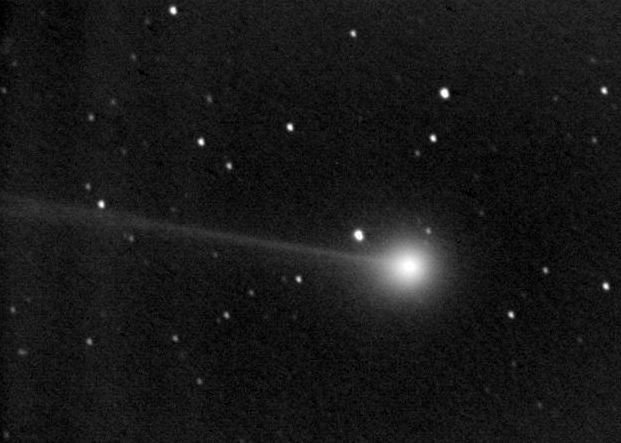
|
Credit: Andrew Cooper
Explanation:
Comet
Ikeya-Zhang
is presently heading north in planet
Earth's sky,
framed by stars of the constellation Cetus.
The comet was
discovered as a faint,
telescopic
object near the western
horizon on the evening of February 1st independently by
Kaoru Ikeya of Shizuoka prefecture, Japan,
Daqing Zhang in Henan province, China, and
later by
observer Paulo Raymundo of Salvador, Brazil.
But Ikeya-Zhang
is expected to brighten significantly and in March and
April could become visible to the unaided eye.
This picture, taken near Tucson, Arizona, USA on the evening of
February 9th, covers a field a bit less than the width of the full moon
showing the comet's
condensed coma and narrow, developing
tail.
Ikeya-Zhang should pass closest to the Sun (perihelion) on March 18 at
a point roughly midway between the orbits of
Mercury and Venus.
Based on preliminary calculations of this comet's orbit,
Ikeya-Zhang is
suspected of being a periodic comet, returning to the inner
Solar System every 500 years or so.
In fact, it is speculated that Ikeya-Zhang may be directly connected
with a historic
bright comet seen in 1532.
|
January February March April May June July August September October November December |
| ||||||||||||||||||||||||||||||||||||||||||||||||
NASA Web Site Statements, Warnings, and Disclaimers
NASA Official: Jay Norris. Specific rights apply.
A service of: LHEA at NASA / GSFC
& Michigan Tech. U.
Based on Astronomy Picture
Of the Day
Publications with keywords: comet - comet Ikeya-Zhang
Publications with words: comet - comet Ikeya-Zhang
See also:
